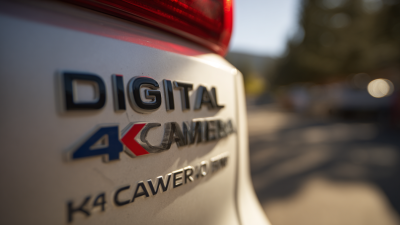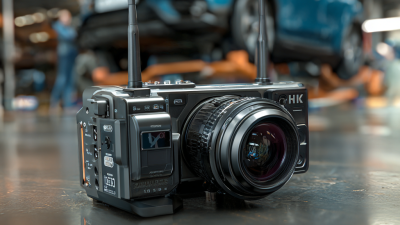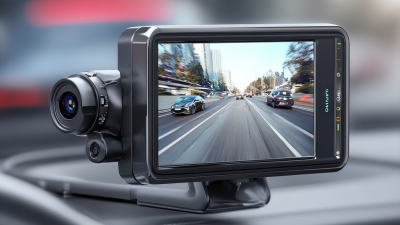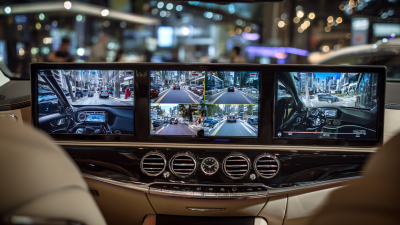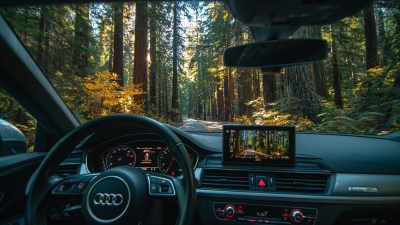In today's fast-paced world, enhancing driving safety is more crucial than ever, and one of the most effective ways to achieve this is by utilizing an Auto Rear View Camera System. This innovative technology provides drivers with a clear and unobstructed view of their surroundings when reversing, significantly reducing the risk of accidents and improving overall situational awareness.

As more vehicles incorporate this essential feature, understanding how to effectively use and maximize its benefits can make a substantial difference in driving safety. From installation to operation and maintenance, this guide will explore various methods to enhance your driving experience and ensure peace of mind on the road. By integrating an Auto Rear View Camera System into your vehicle, you take a proactive step towards creating a safer driving environment for yourself and others.
The installation of an auto rear view camera system significantly enhances vehicle safety, addressing a critical concern in today’s driving environment. According to the National Highway Traffic Safety Administration (NHTSA), around 210 fatalities and 15,000 injuries occur annually due to backover accidents, which often involve children and elderly individuals. Adding a rear view camera can help mitigate these risks by providing drivers with a clear view of the area behind their vehicle, improving awareness and reducing blind spots.
Tips: When selecting a rear view camera system, look for models that offer wide-angle views and night vision capabilities. Research indicates that vehicles equipped with cameras have seen a 50% decrease in backing accidents, emphasizing the effectiveness of these systems. Additionally, ensure that the installation is done professionally to guarantee optimal functionality and integration with your vehicle's existing systems.
Furthermore, many auto insurance companies recognize the safety advantages offered by rear view cameras, potentially providing discounts for vehicles equipped with this technology. This incentive reflects a broader industry acknowledgment of the role such systems play in accident prevention. Incorporating a rear view camera is not only a step towards safer driving but can also provide long-term financial benefits through reduced insurance premiums.
Blind spots are a significant concern for drivers, as they can obscure crucial areas that are not visible through conventional mirrors. This lack of visibility increases the risk of accidents, especially during lane changes or when reversing. Studies show that many collisions occur because drivers fail to check their blind spots thoroughly before maneuvering. Thus, understanding and mitigating the risks associated with blind spots is vital to enhancing overall driving safety.
Implementing an auto rear view camera system can effectively address these blind spot problems. These cameras provide a wide-angle view of the area behind and alongside the vehicle, allowing drivers to spot obstacles or pedestrians that may be hidden from traditional mirror views. The live feed from the camera can alert drivers to potential hazards that they might otherwise miss, significantly reducing the likelihood of rear-end collisions and other accidents. By integrating such technology into vehicles, drivers can gain greater awareness of their surroundings, making informed decisions that prioritize safety on the road.
| Safety Factor | Impact of Blind Spots | Camera Mitigation Method | Effectiveness (% Improvement) |
|---|---|---|---|
| Rear Visibility | Limited sightline while reversing | Rear view cameras provide a direct line of sight | 75% |
| Pedestrian Detection | Difficulty seeing pedestrians behind the vehicle | Cameras enhance visibility of pedestrians | 70% |
| Obstacle Awareness | Obscured obstacles during parking | Cameras provide a wider angle of view | 80% |
| Accident Prevention | High risk of accidents due to blind spots | Alerts and visuals from camera systems | 85% |
As vehicle safety continues to be a paramount concern, the integration of rear view camera systems has emerged as a powerful tool in reducing backup accidents. According to recent research from the Insurance Institute for Highway Safety (IIHS), rearview cameras have been shown to cut the incidence of backup crashes by approximately 16%. This statistic is particularly significant for senior drivers, who often face greater challenges when maneuvering in reverse. The technology not only enhances visibility but also provides drivers with a crucial safety net that can mitigate the risk of accidents.
The market for automotive backup cameras is expected to grow substantially, projected to reach USD 639.5 million in value by 2023, with a compound annual growth rate (CAGR) of 18.1% through 2030. This growth is driven by rising consumer demand for safety and convenience features in vehicles. While some analyses question the overall economic justification of certain safety features, consensus highlights the efficacy of rear view camera systems in significantly improving driving safety. With ongoing advancements in driver assistance technologies, the incorporation of rearview cameras is becoming an indispensable aspect of modern vehicle design.

When selecting an auto rear view camera system, key features play a crucial role in enhancing driving safety. According to a report by the National Highway Traffic Safety Administration (NHTSA), backing-up crashes result in over 200 fatalities and 12,000 injuries annually in the U.S. A high-resolution camera with at least 720p quality significantly enhances driver visibility, allowing for clearer identification of hazards behind the vehicle. Look for systems that offer a wide-angle lens, ideally ranging from 120 to 180 degrees, as they can reduce blind spots and provide a comprehensive view of the surroundings.
Another important feature to consider is night vision capability. A study published in the Journal of Safety Research indicates that nearly 30% of vehicle accidents occur after dusk, highlighting the need for optimal visibility during nighttime or low-light conditions. Cameras equipped with infrared or low-light sensors can significantly improve performance in these situations. Additionally, features such as guidelines for parking assistance, motion detection, and integration with GPS systems can further enhance safety by providing real-time information and support while driving. By selecting a rear view camera that incorporates these critical features, drivers can contribute to safer roadways for themselves and others.

Using a rear view camera system can significantly enhance driving safety, especially when it comes to parking and maneuvering. According to a report by the National Highway Traffic Safety Administration (NHTSA), backup cameras can reduce backover crashes by as much as 30%. This statistic highlights the crucial role rear view cameras play in providing drivers with a clearer view of their surroundings, particularly in crowded or confined spaces. By integrating these systems into vehicles, drivers can better avoid obstacles, pedestrians, and other vehicles, ultimately leading to safer driving experiences.
Best practices for utilizing rear view cameras effectively include regular calibration to ensure accuracy, as misaligned cameras can lead to misjudgments during maneuvers. Moreover, drivers should be trained to use these systems in conjunction with traditional mirrors, as relying solely on a camera can create blind spots. Research from the Automotive Safety Council shows that combining the insights from both rear view cameras and mirrors can double a driver’s awareness of their surroundings. Engaging with these technologies through practice can greatly improve parking skills, making tricky situations, such as parallel parking, more manageable and safer.
